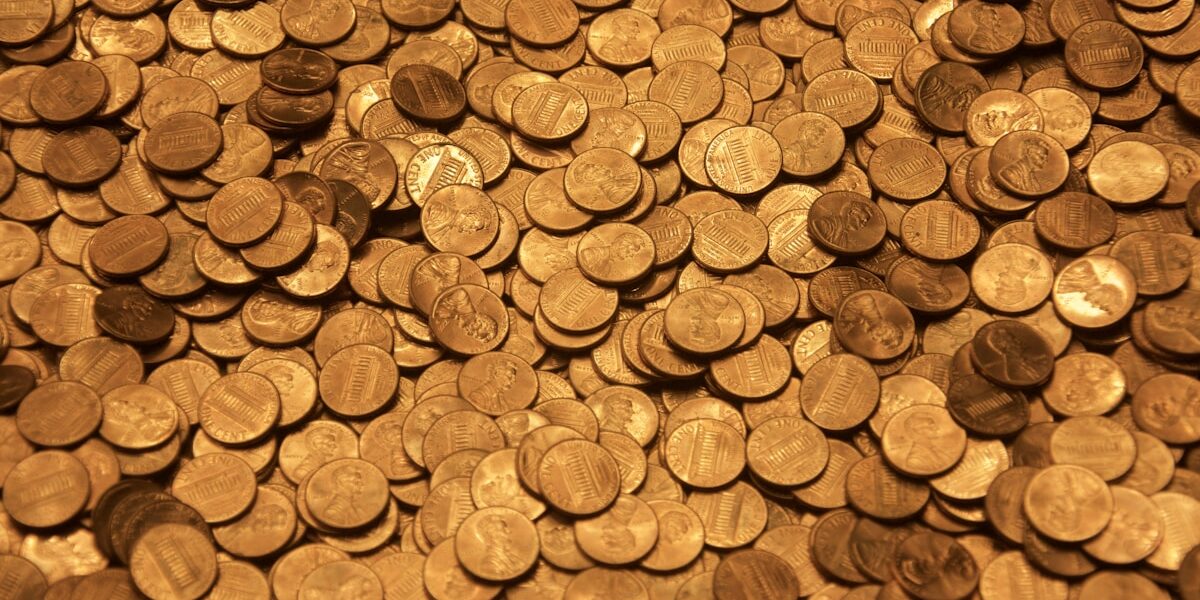Error Pennies List with Pictures
Pennies are an integral part of U.S. numismatics. Collectors and enthusiasts seek rare and unusual coins. Among these are error pennies. These coins showcase mistakes made during minting. Such errors can increase the penny’s value significantly.
Types of Error Pennies

The variety of error pennies is vast. Each type tells a story of its creation. Here are some common varieties:
Double Die Penny
Double die pennies are striking. This error occurs when the die used to mint the coin shifts between strikes. The result is letters or images appearing doubled. One of the most famous is the 1955 double die penny. Collectors highly prize this penny. The doubling is most evident in the date and inscription.
Off-Center Penny
Off-center pennies happen when a blank, known as a planchet, is improperly seated in the press. This leads to a partial impression of the design. Coins missing a large part of their imagery are especially valuable. The more off-center the strike, the rarer the coin. However, the date and mint mark need to be visible for maximum value.
Broadstrike Penny
Broadstrikes occur without a collar. A collar is a metal ring that restricts coin expansion during minting. Without it, the metal flows outward, creating a flattened coin with a larger diameter. These pennies have standard imagery but appear wider than expected.
Clipped Planchet Penny
Clipped planchet errors can be crescent or straight clipped. This happens when the blank punches partly overlap previously removed areas. Coins with curved clips, resembling a crescent moon, are a visual favorite. Although not as rare, they remain popular among collectors.
Capped Die Penny
When a coin sticks to the die, subsequent coins imprint the stuck coin’s design. This creates a capped or bottle cap effect. The first few coins are deeply affected. Capped die pennies have unique appearances. They often look bubbled or distorted.
Die Crack Penny
Die cracks occur when the minting die fractures. Coins minted with cracked dies show raised lines along the break. These lines appear random, trailing across the penny. Although common, each features unique patterns. The value rises with the severity of the crack and its impact on the design.
Notable Error Pennies
- 1955 Double Die Penny: As mentioned, its doubled date makes it famous.
- 1972 Double Die Obverse: Multiple features, especially the date, show doubling.
- 1983 Double Die Reverse: Rarer than typical issues, with doubling on the reverse side.
- 1999 Wide AM Penny: Correct version shows AM in America touching, while this error shows a gap.
- 1992 Close AM Penny: Opposite of the 1999 error, where expected space doesn’t exist.
Collecting Error Pennies
Value varies widely among error pennies. Key factors include rarity, type of error, and condition. Authentication is crucial for serious collectors. Misidentified coins can lead to financial loss. Various organizations and professionals can authenticate coins. Grades, given by these experts, determine a coin’s market value.
Be aware of forgeries. Many individuals attempt to profit unethically from demand. Familiarize yourself with genuine appearances. Books, online databases, and collector societies can provide reliable information.
Even simple mistakes can have historical significance. They highlight changing mint technology and standards. For some, they turn numismatics into a treasure hunt. This hobby keeps enthusiasts searching through many pockets and collections.
Market Trends and Interest
Online platforms have made trading errors more accessible. Auction sites frequently showcase high-ticket error pennies. Local shops and coin shows allow collectors to handle physical pieces. Witnessing errors first-hand helps understand their appeal.
The growing interest has increased demand, driving up prices. While some view it as an investment, others seek the thrill of the hunt. It combines history, economics, and craftsmanship.
Recommended Collecting Supplies
Coin Collection Book Holder Album – $9.99
312 pockets for coins of all sizes.
20x Magnifier Jewelry Loupe – $13.99
Essential tool for examining coins and stamps.
As an Amazon Associate, we earn from qualifying purchases.




Subscribe for Updates
Get the latest articles delivered to your inbox.
We respect your privacy. Unsubscribe anytime.